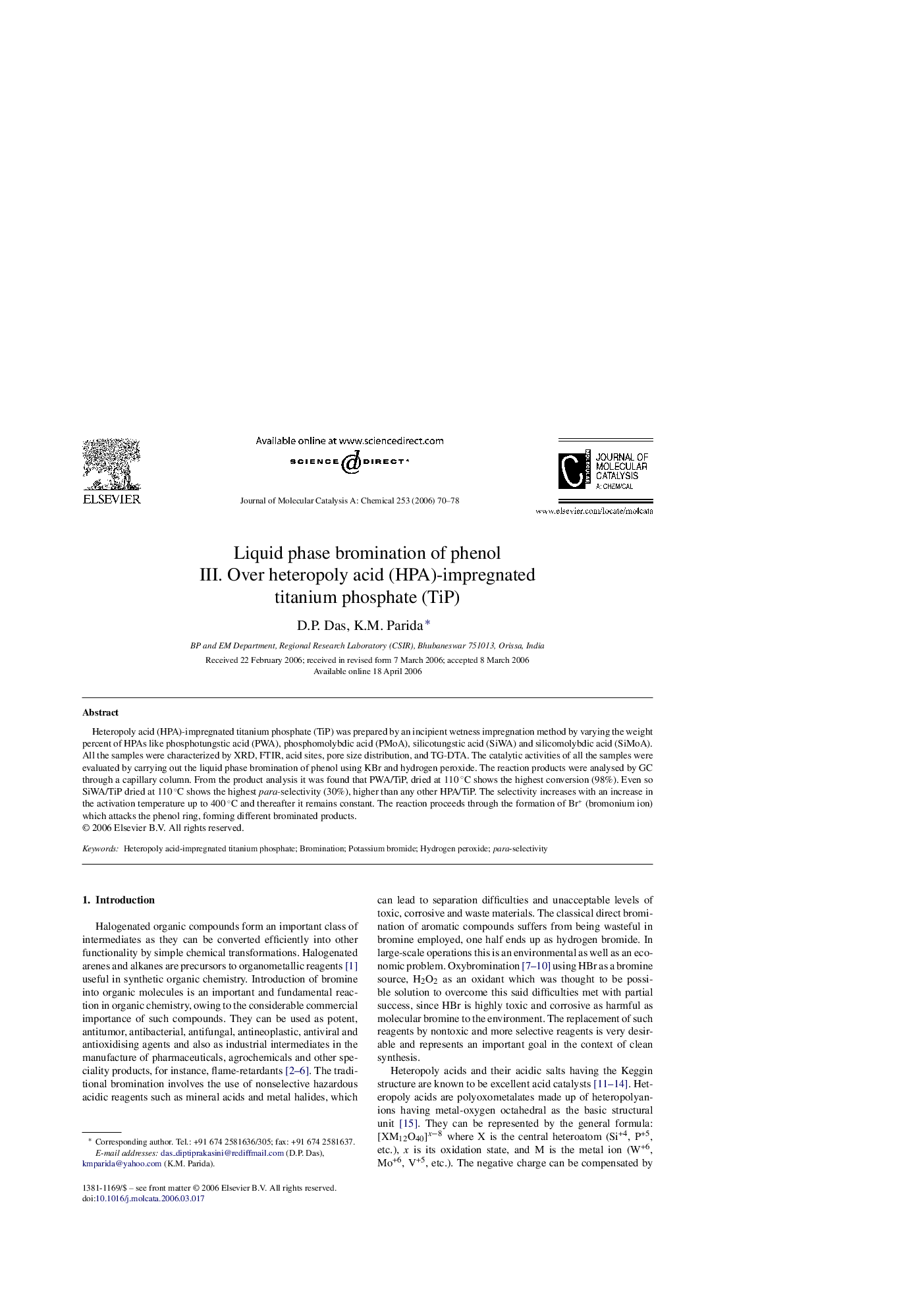| کد مقاله | کد نشریه | سال انتشار | مقاله انگلیسی | نسخه تمام متن |
|---|---|---|---|---|
| 68925 | 48526 | 2006 | 9 صفحه PDF | دانلود رایگان |

Heteropoly acid (HPA)-impregnated titanium phosphate (TiP) was prepared by an incipient wetness impregnation method by varying the weight percent of HPAs like phosphotungstic acid (PWA), phosphomolybdic acid (PMoA), silicotungstic acid (SiWA) and silicomolybdic acid (SiMoA). All the samples were characterized by XRD, FTIR, acid sites, pore size distribution, and TG-DTA. The catalytic activities of all the samples were evaluated by carrying out the liquid phase bromination of phenol using KBr and hydrogen peroxide. The reaction products were analysed by GC through a capillary column. From the product analysis it was found that PWA/TiP, dried at 110 °C shows the highest conversion (98%). Even so SiWA/TiP dried at 110 °C shows the highest para-selectivity (30%), higher than any other HPA/TiP. The selectivity increases with an increase in the activation temperature up to 400 °C and thereafter it remains constant. The reaction proceeds through the formation of Br+ (bromonium ion) which attacks the phenol ring, forming different brominated products.
Among the entire HPA-impregnated TiP series, PWA/TiP has got the highest acidic character (130.3 μmol/g). Even so SiWA/TiP, dried at 110 °C showed the highest para-selectivity (30%). With increase in the activation temperature up to 400 °C for 15 wt.% SiWA/TiP, the para-selectivity (4-BP/2-BP) goes on increasing from 0.26 to 1.85 due to the increase in the Lewis acidic character and thereafter the value remains constant. Similarly with increase in the reaction time (h) and catalyst concentration (g/mol), the selectivity ratio (4-BP/2-BP) increases from 1.05 to 1.85 and from 1.23 to 1.85, respectively. Figure optionsDownload as PowerPoint slide
Journal: Journal of Molecular Catalysis A: Chemical - Volume 253, Issues 1–2, 1 July 2006, Pages 70–78